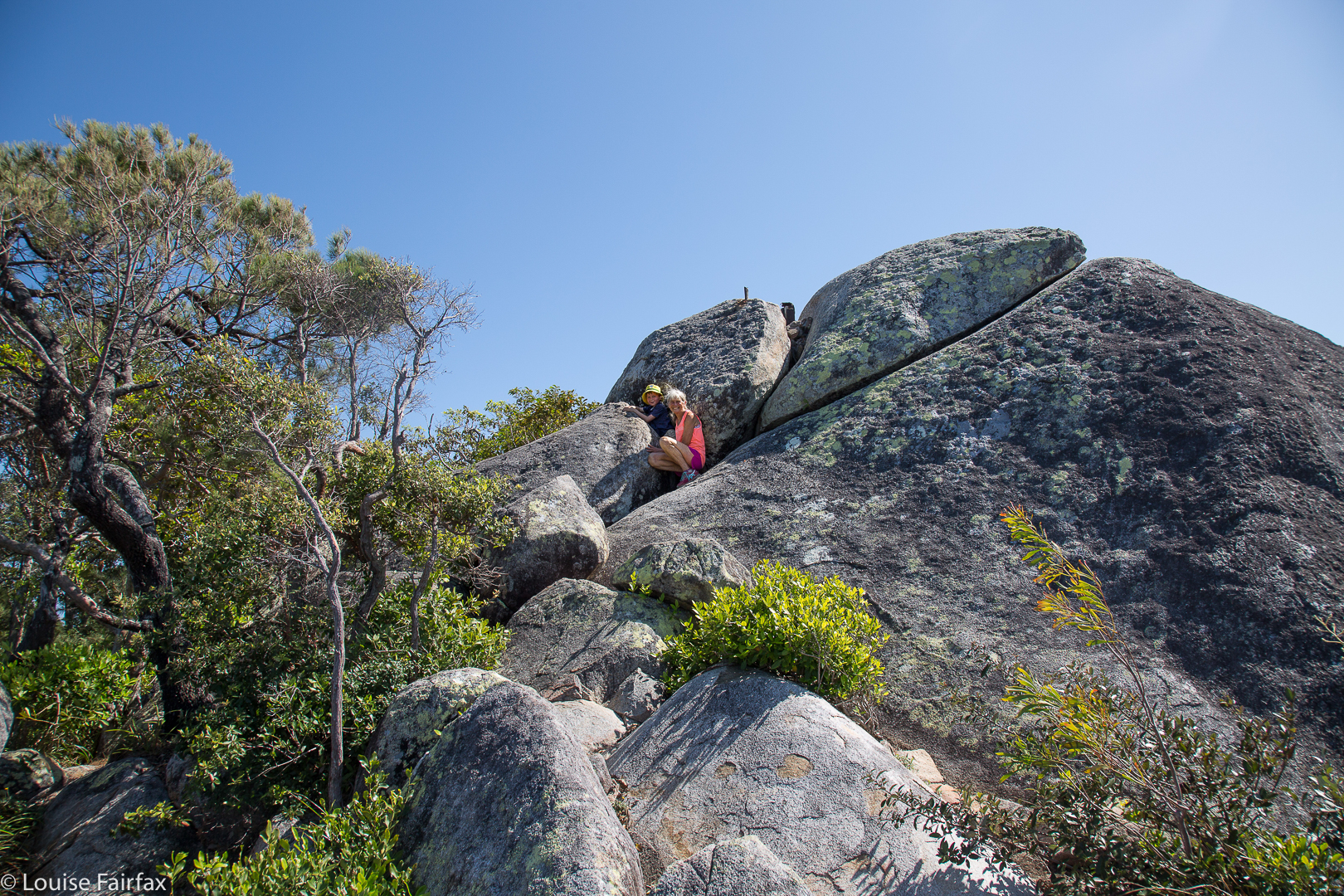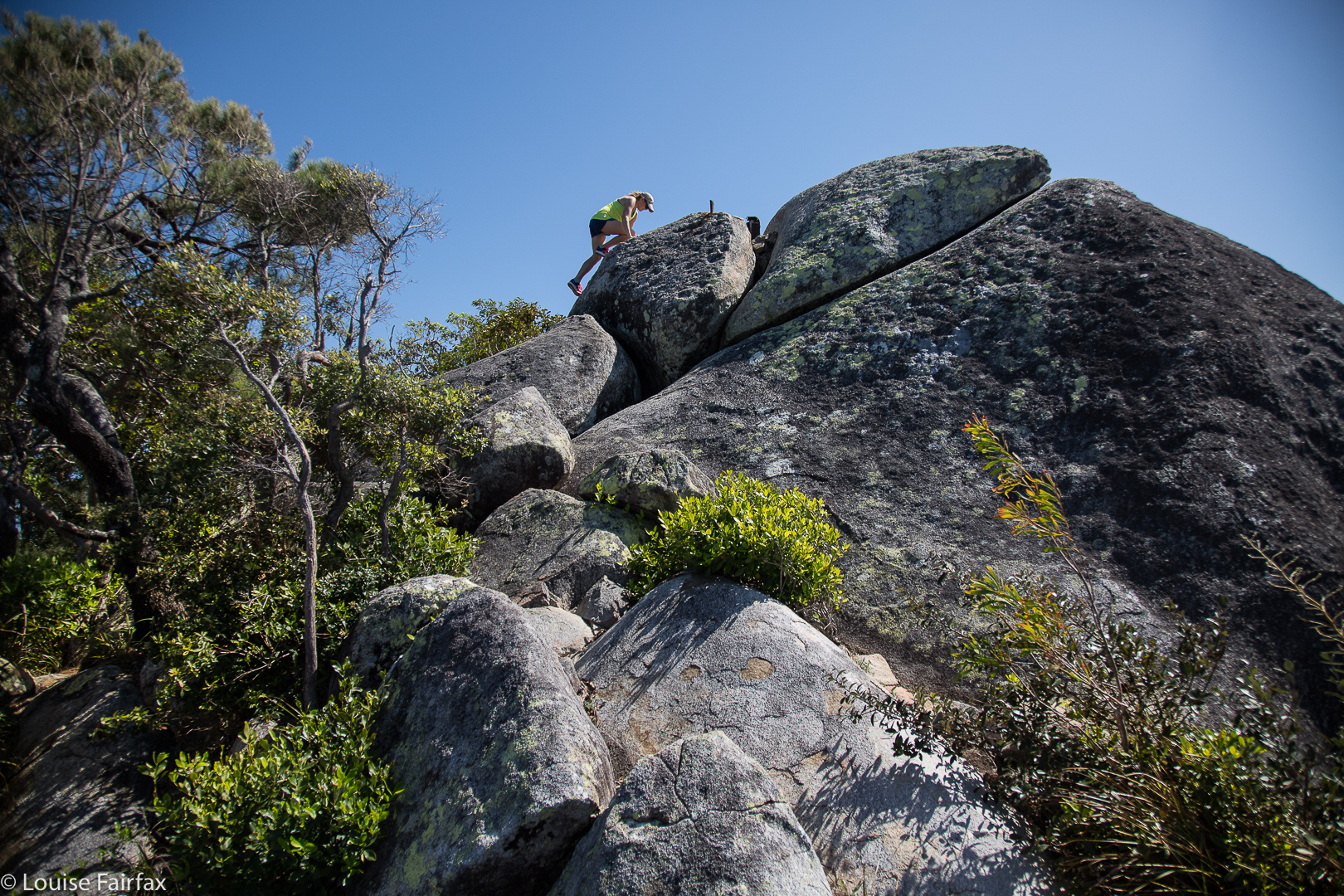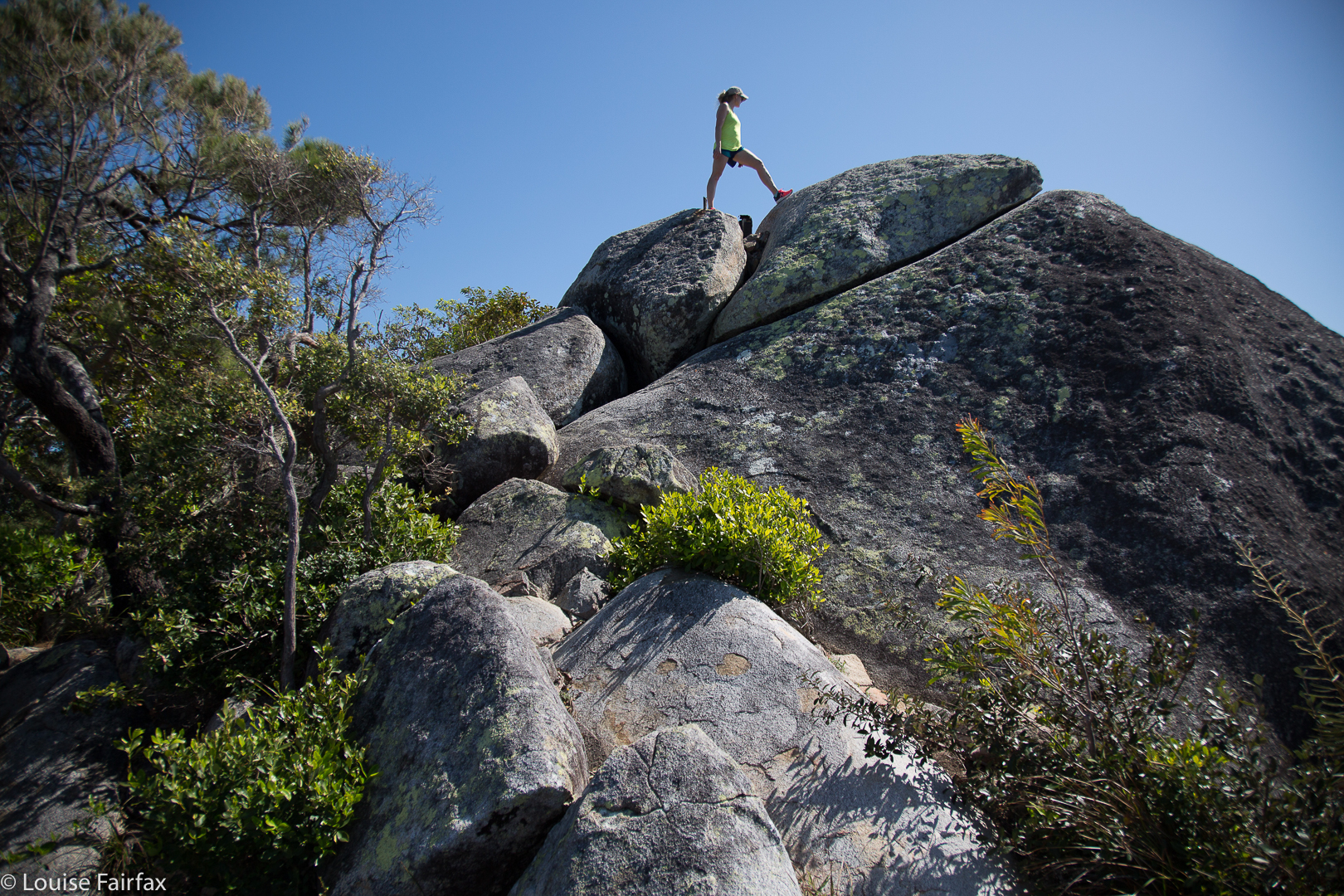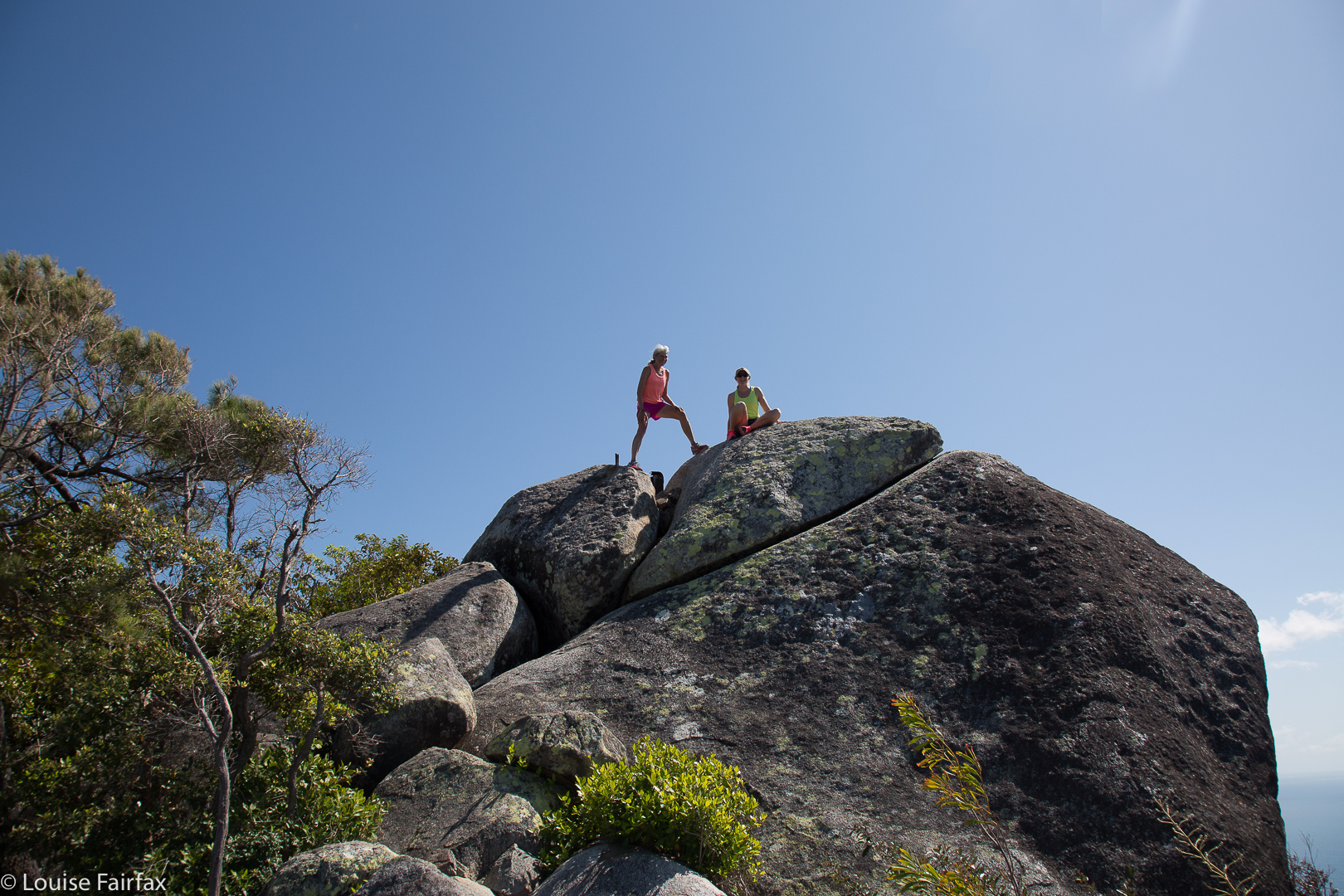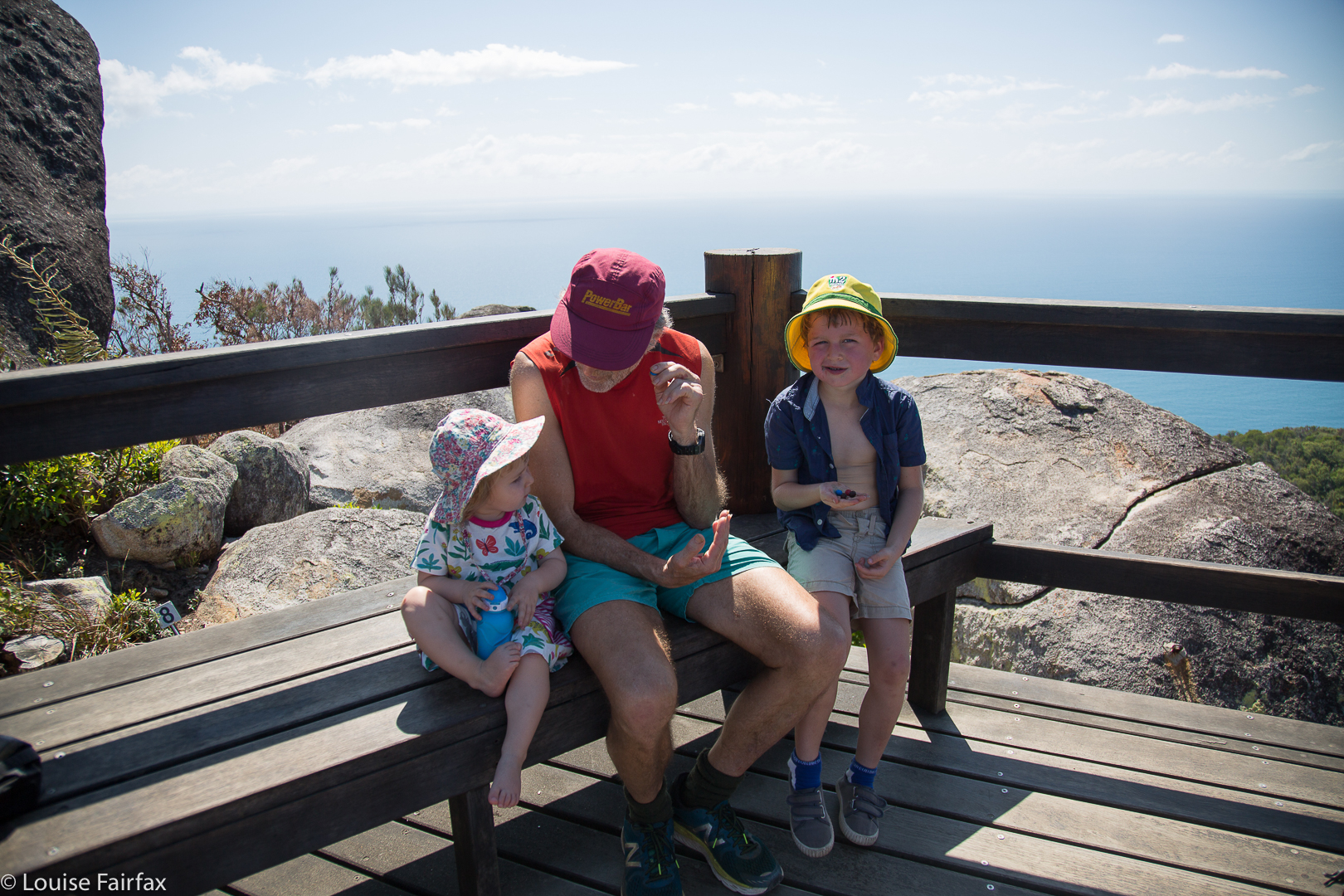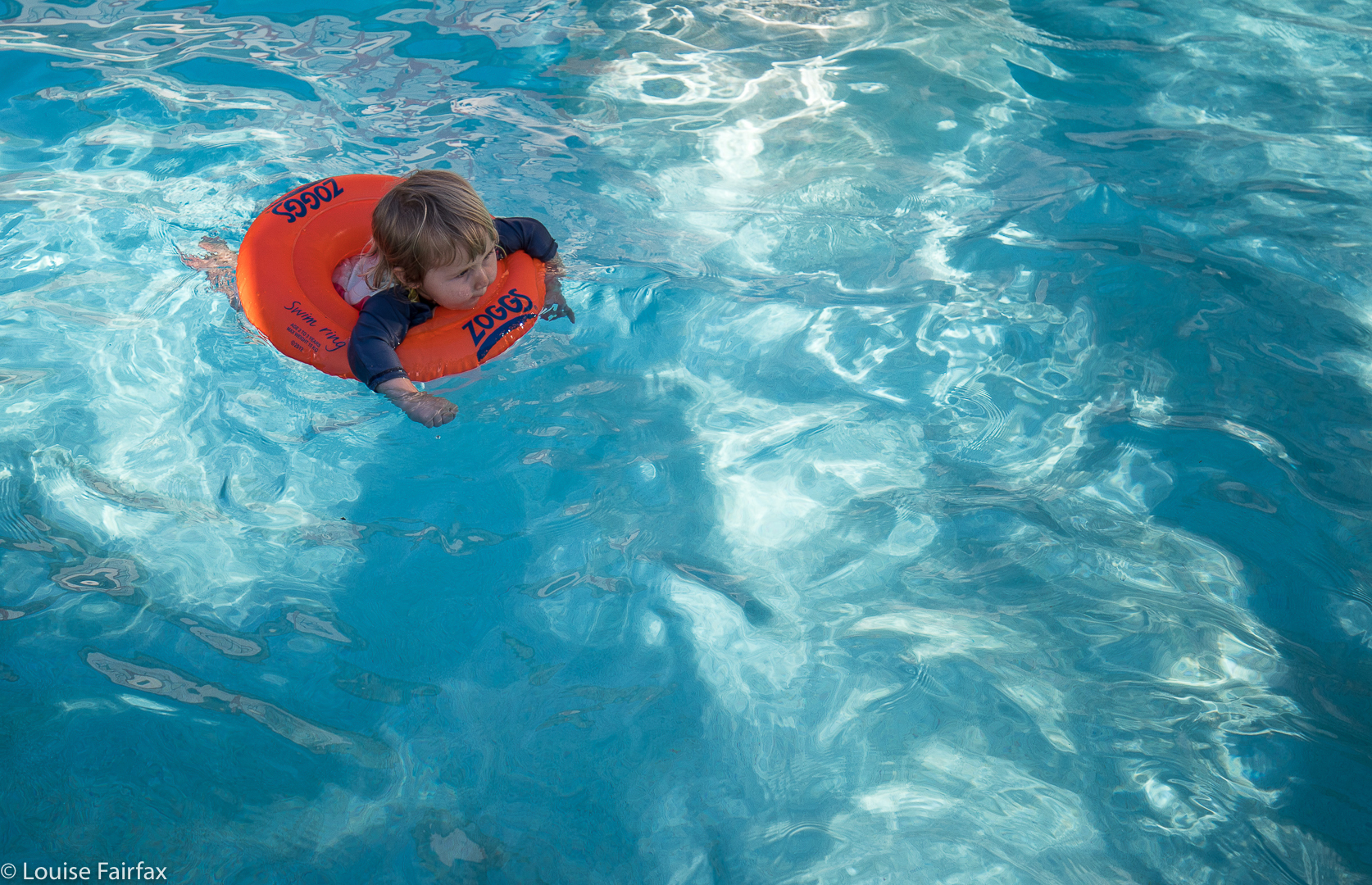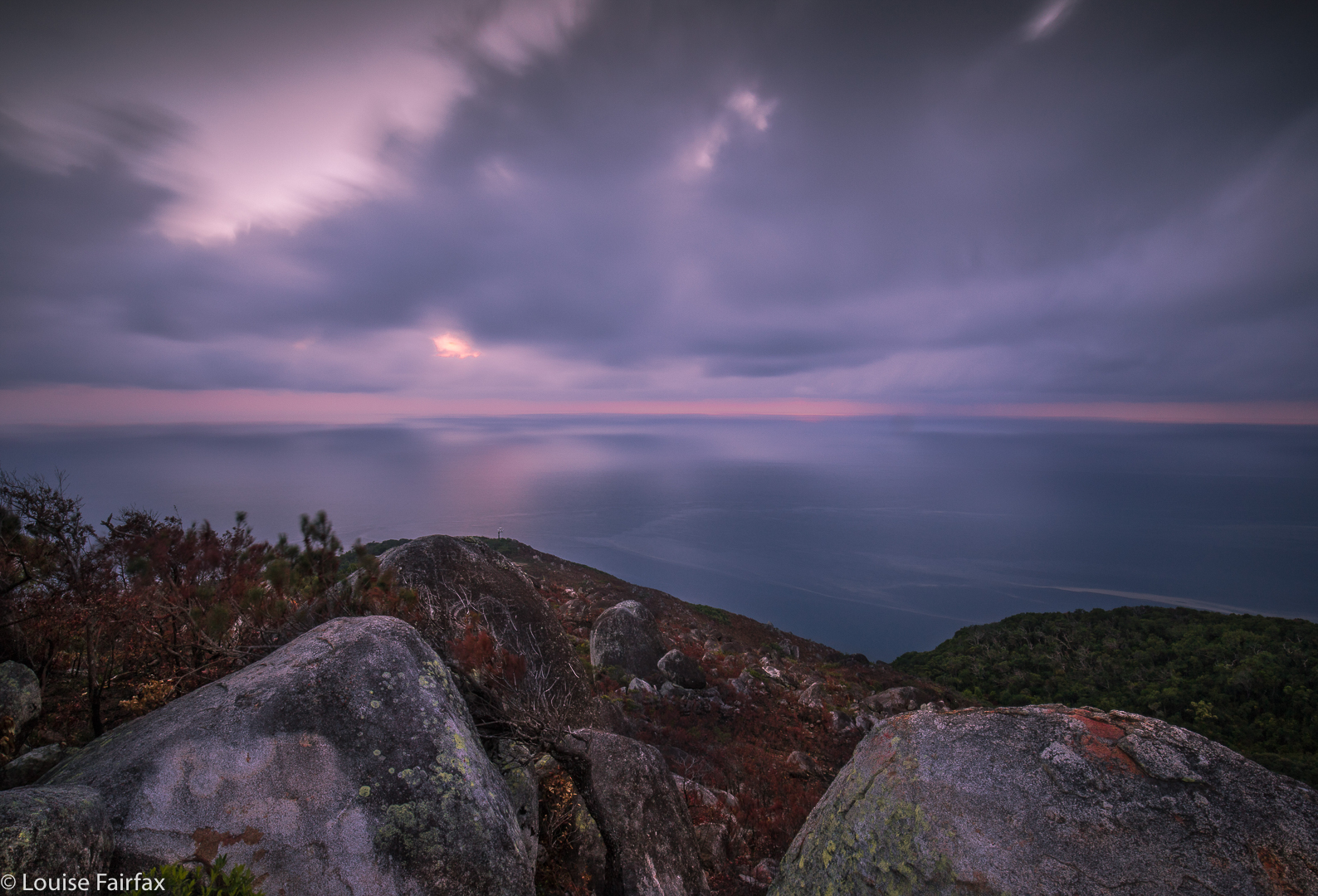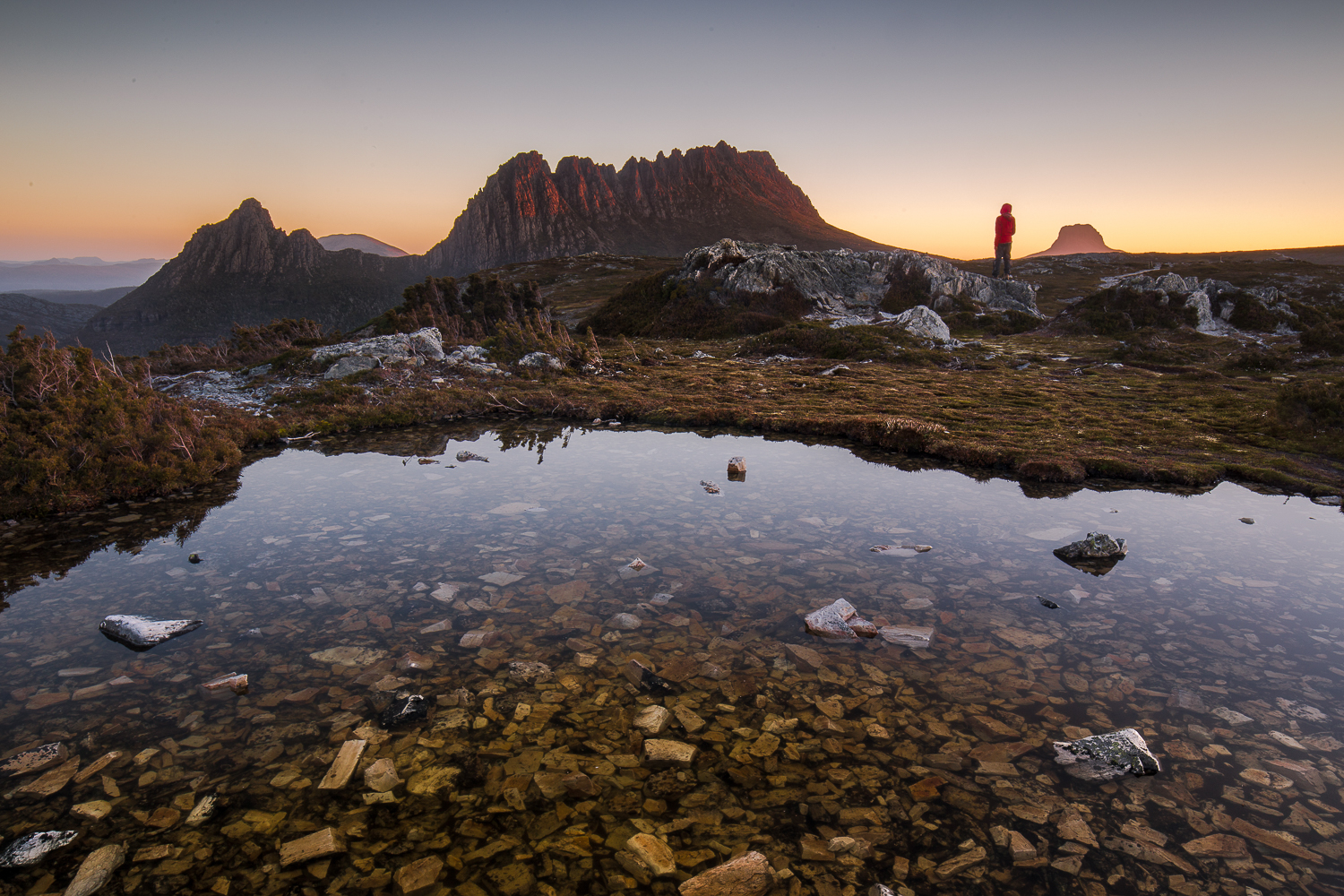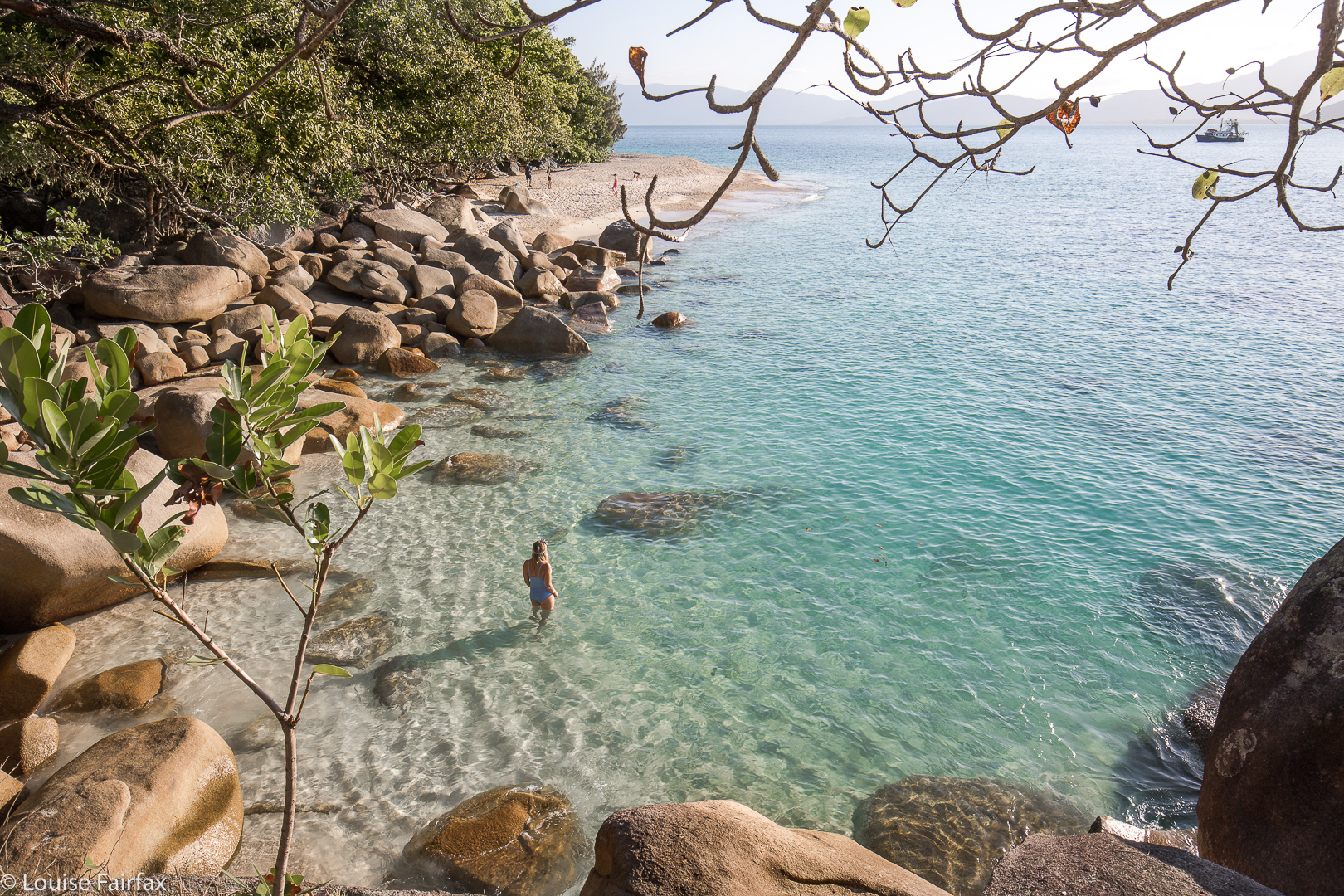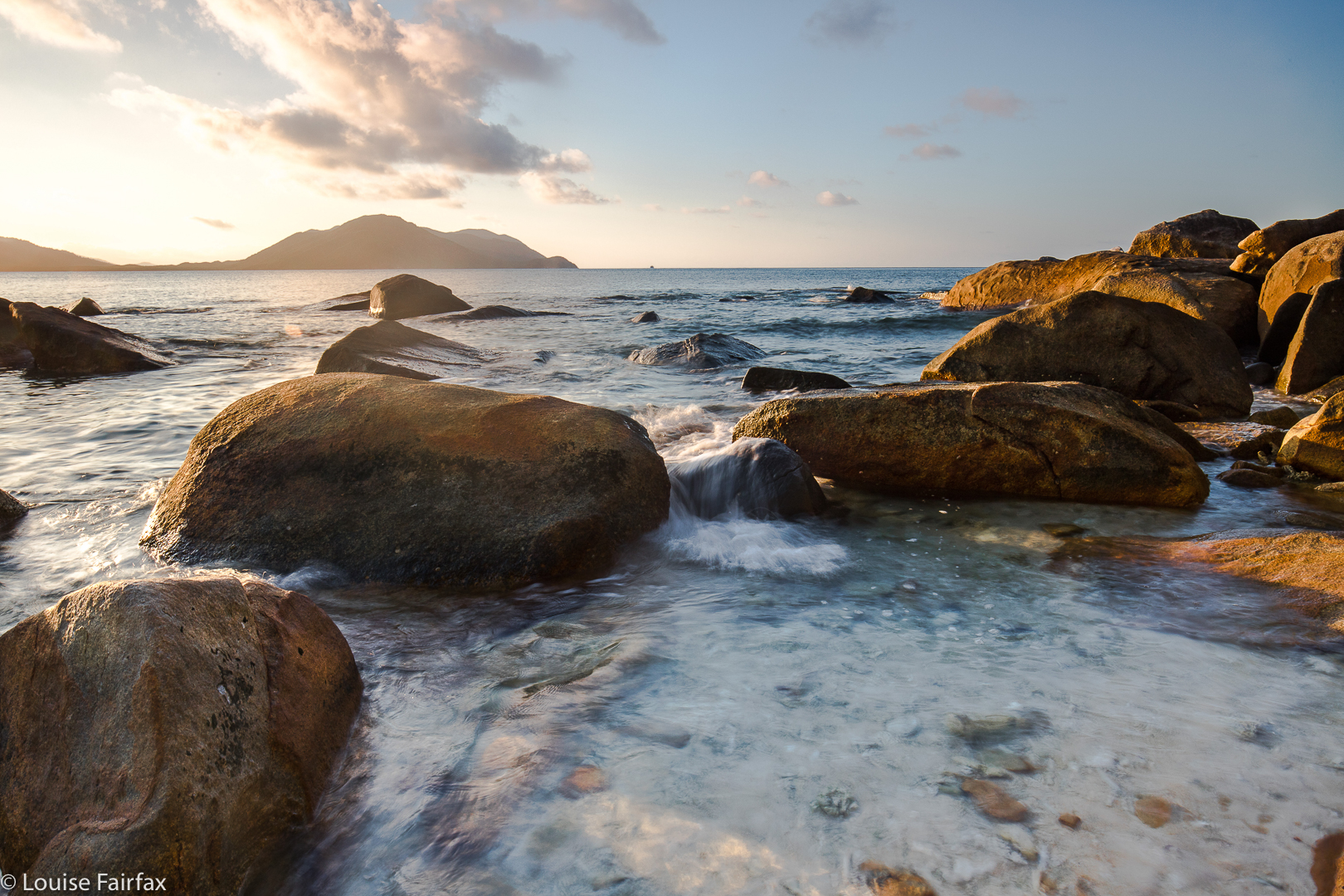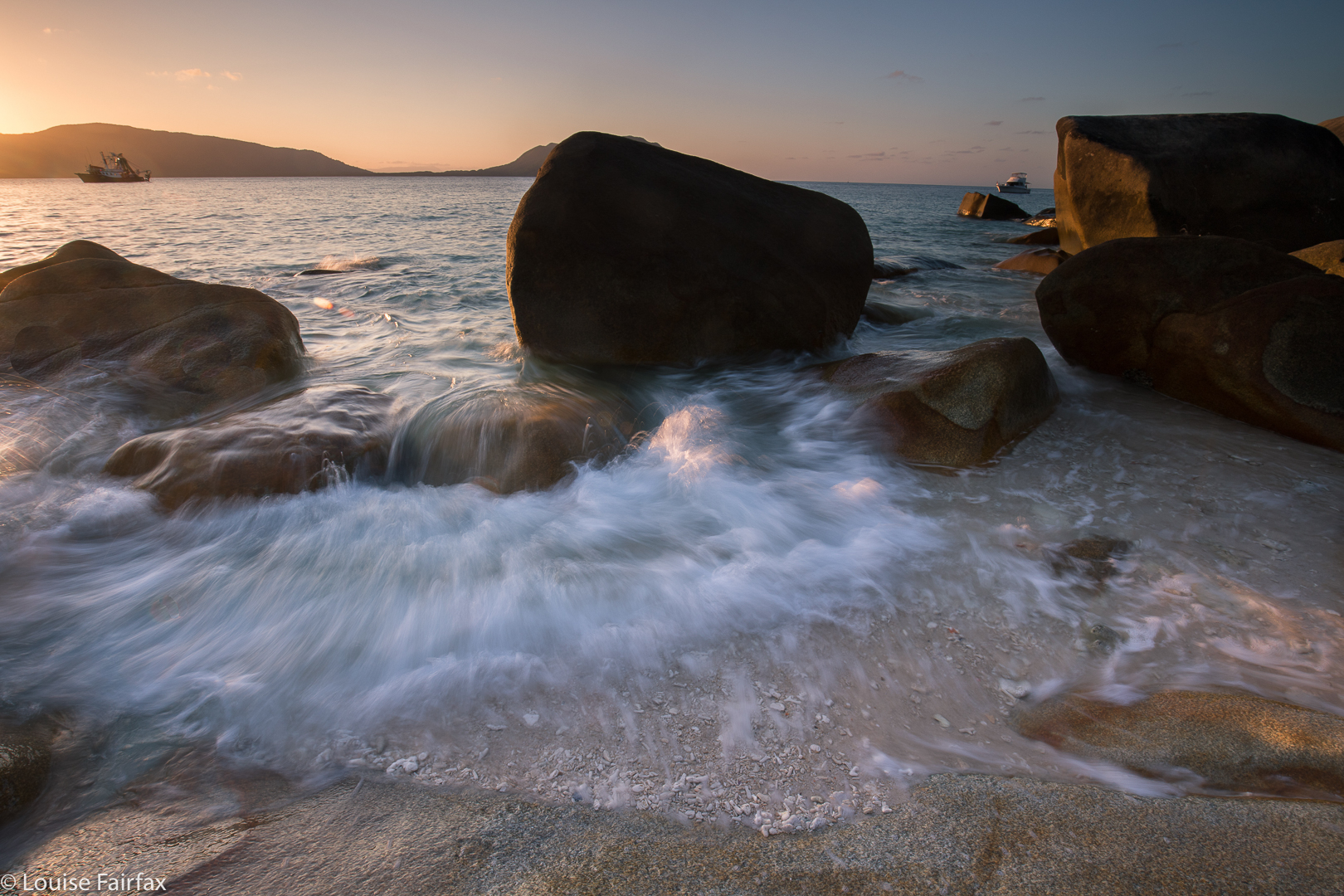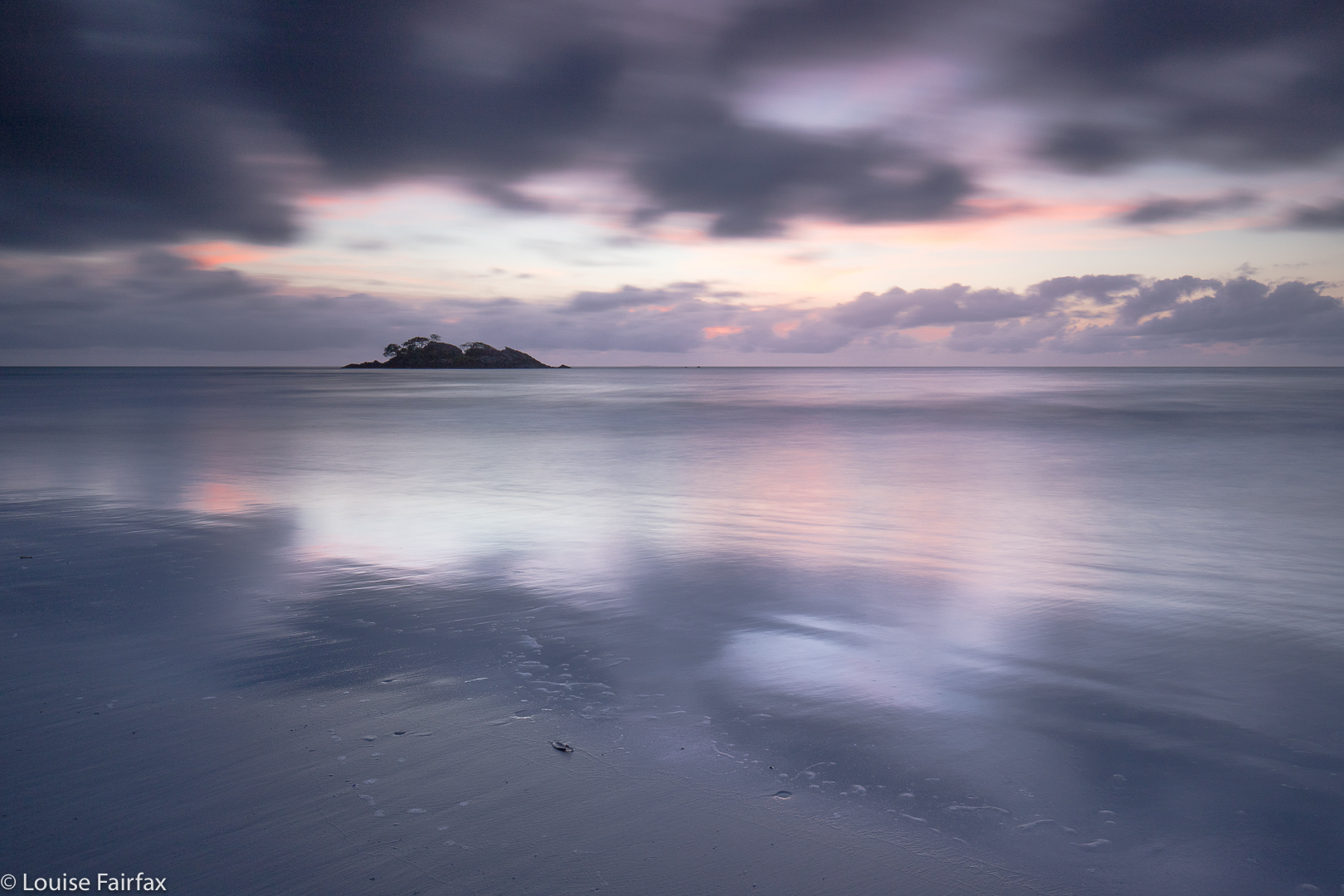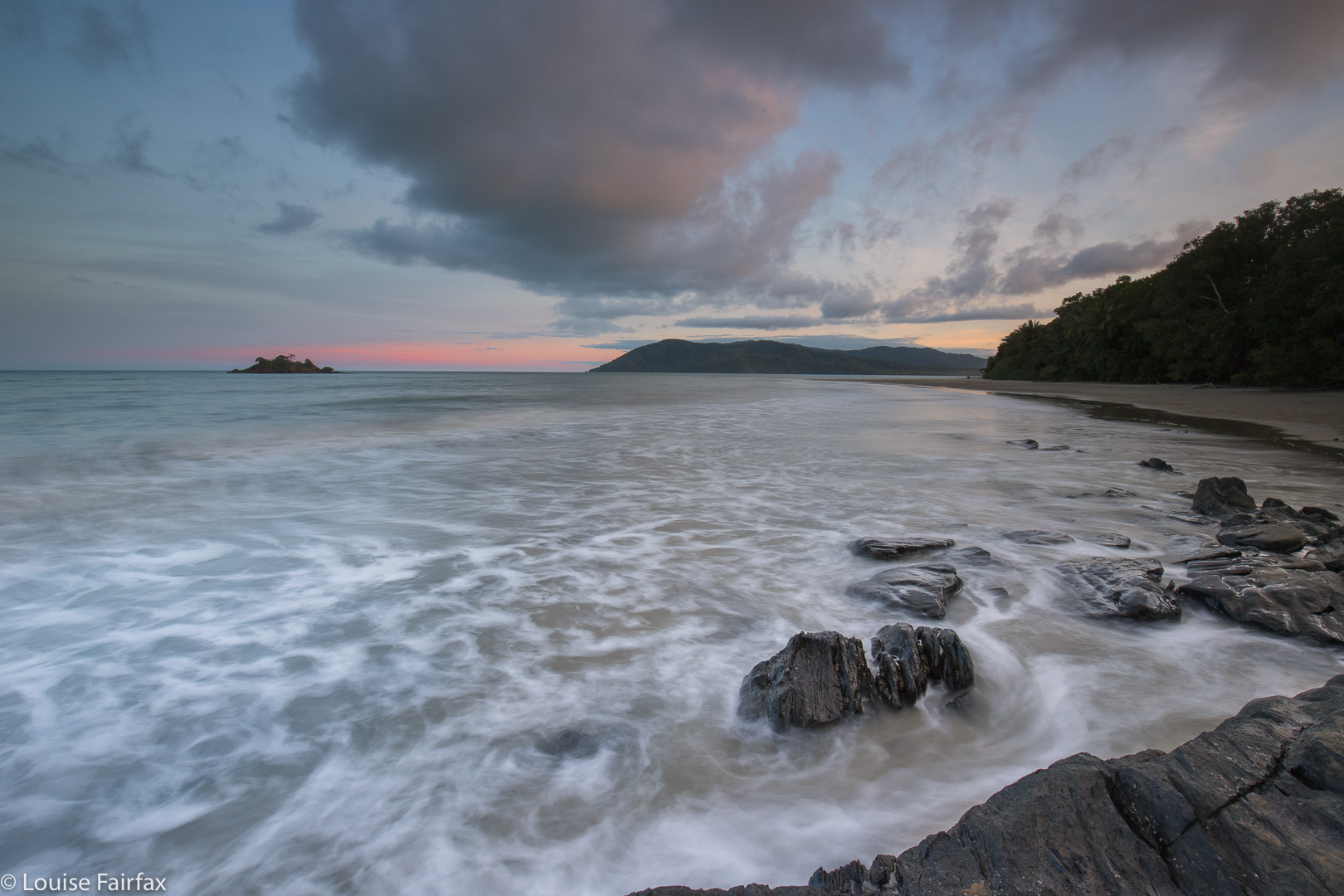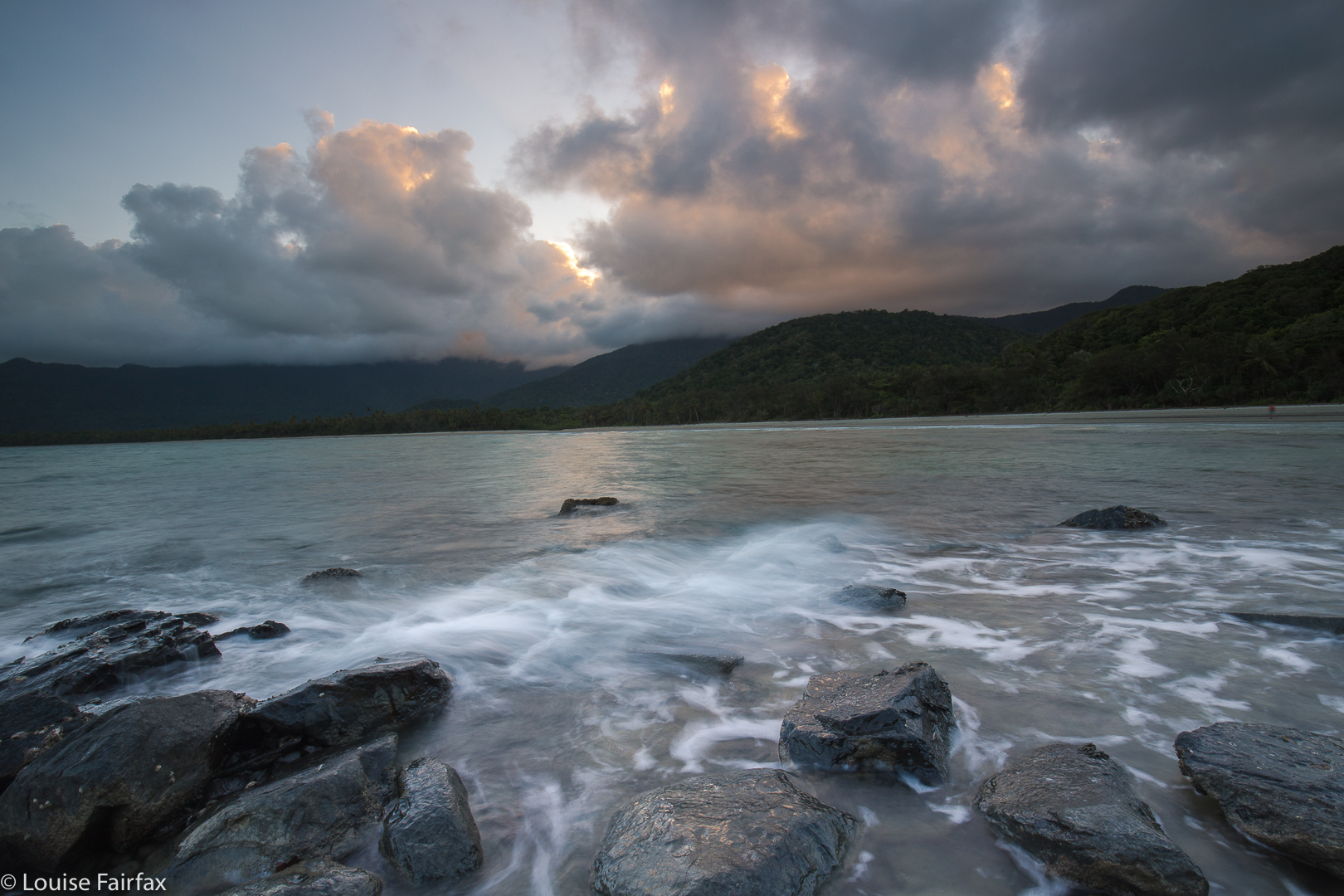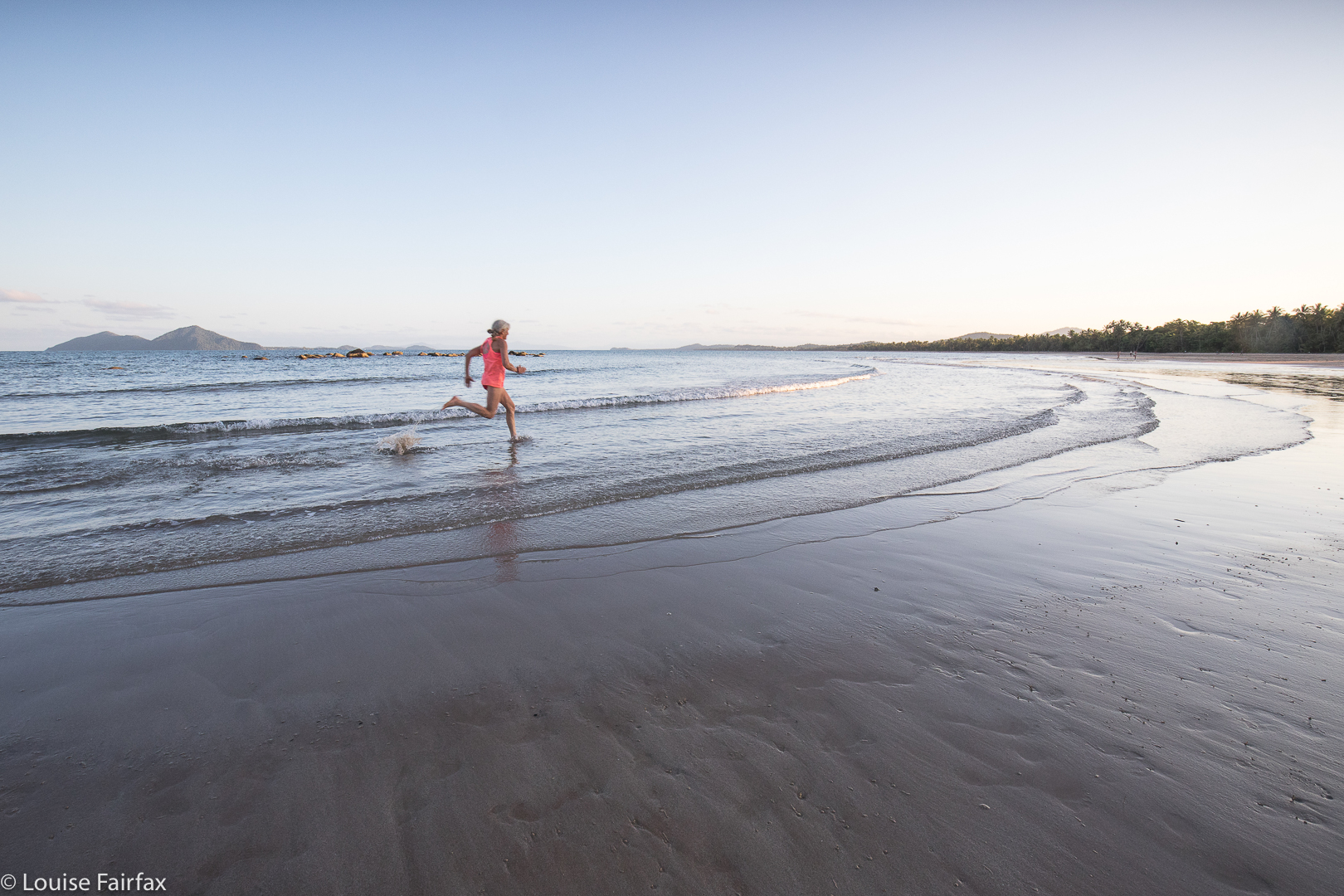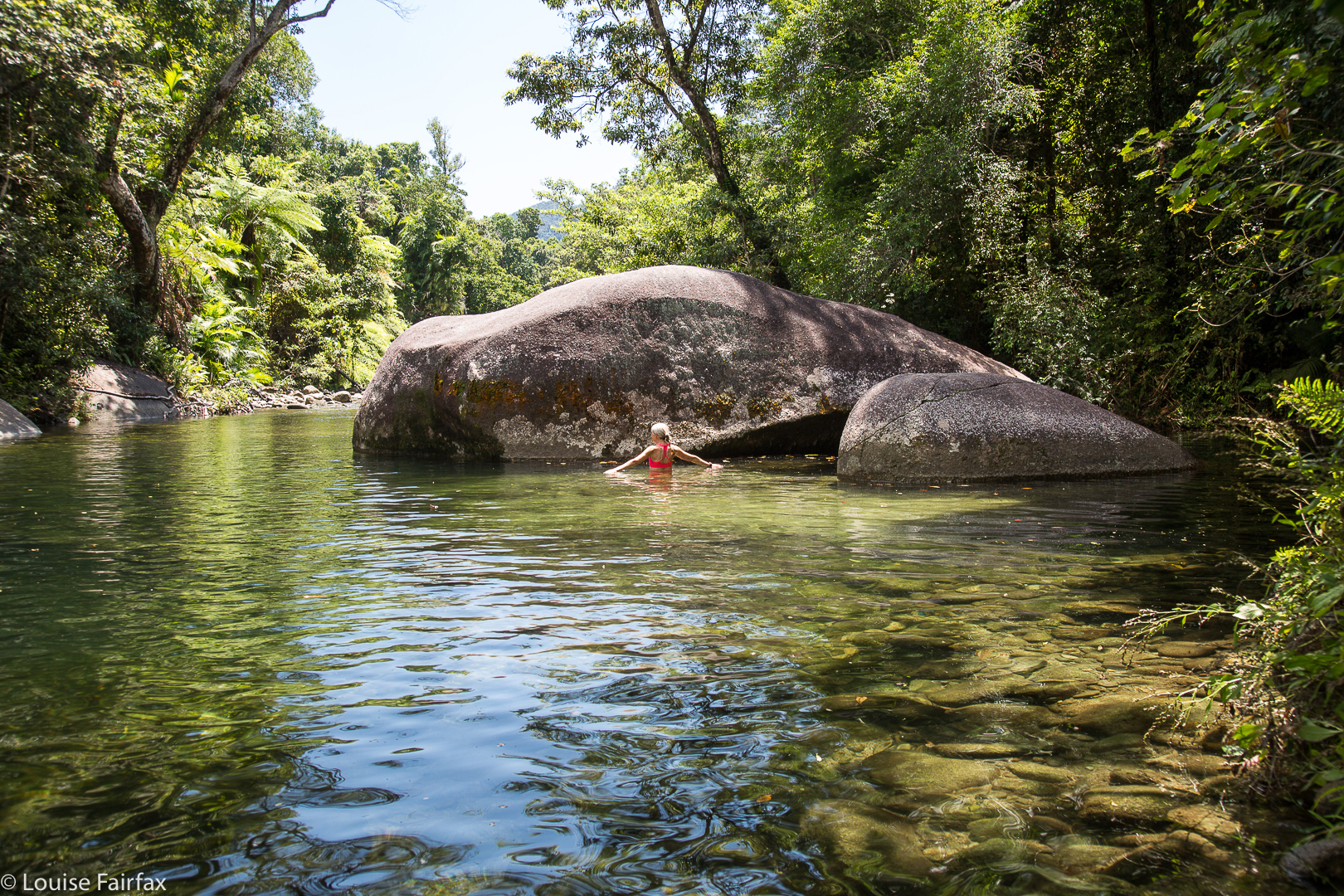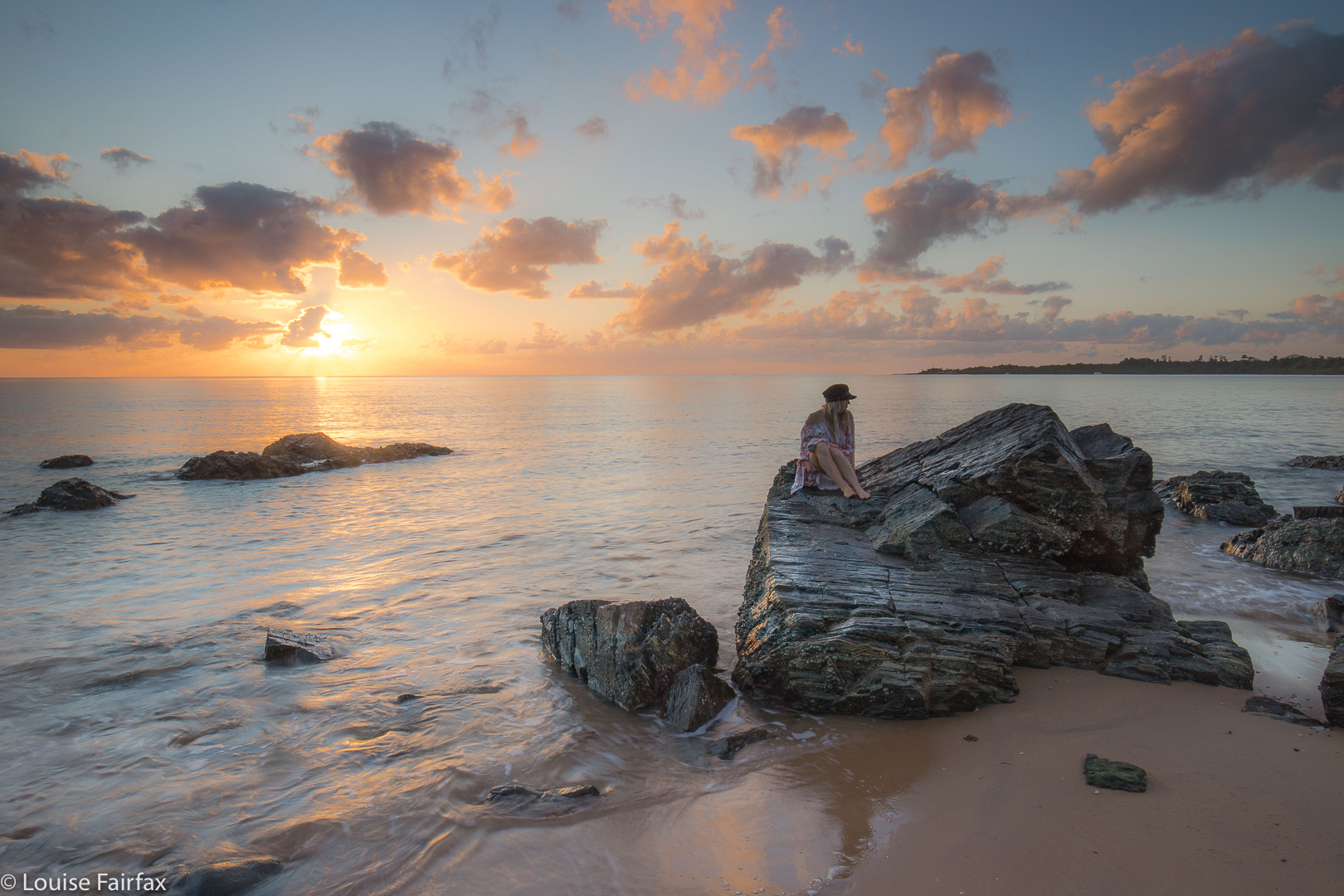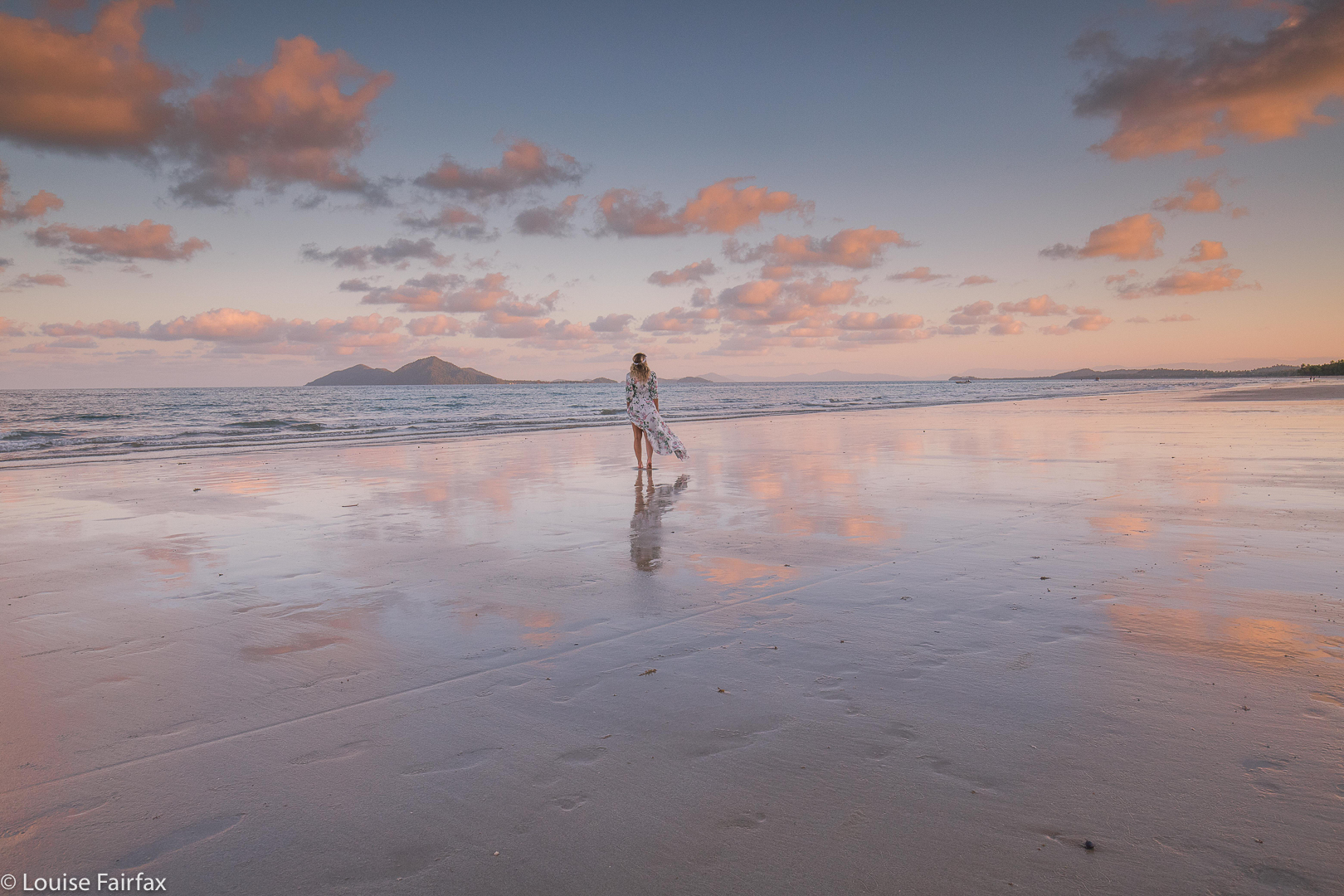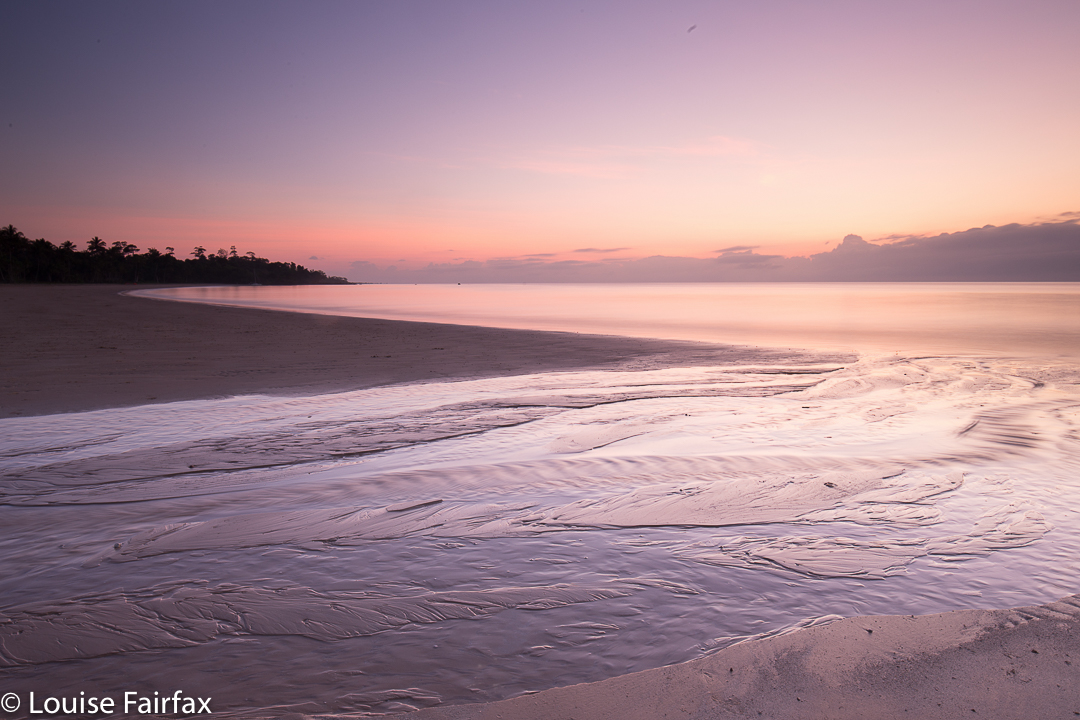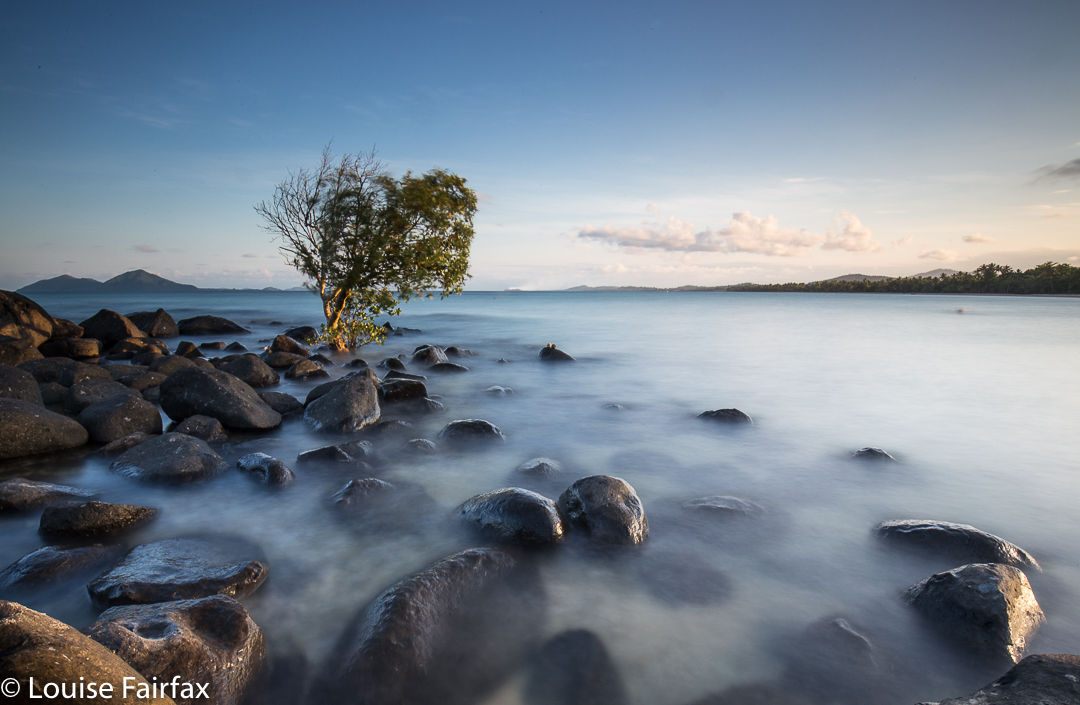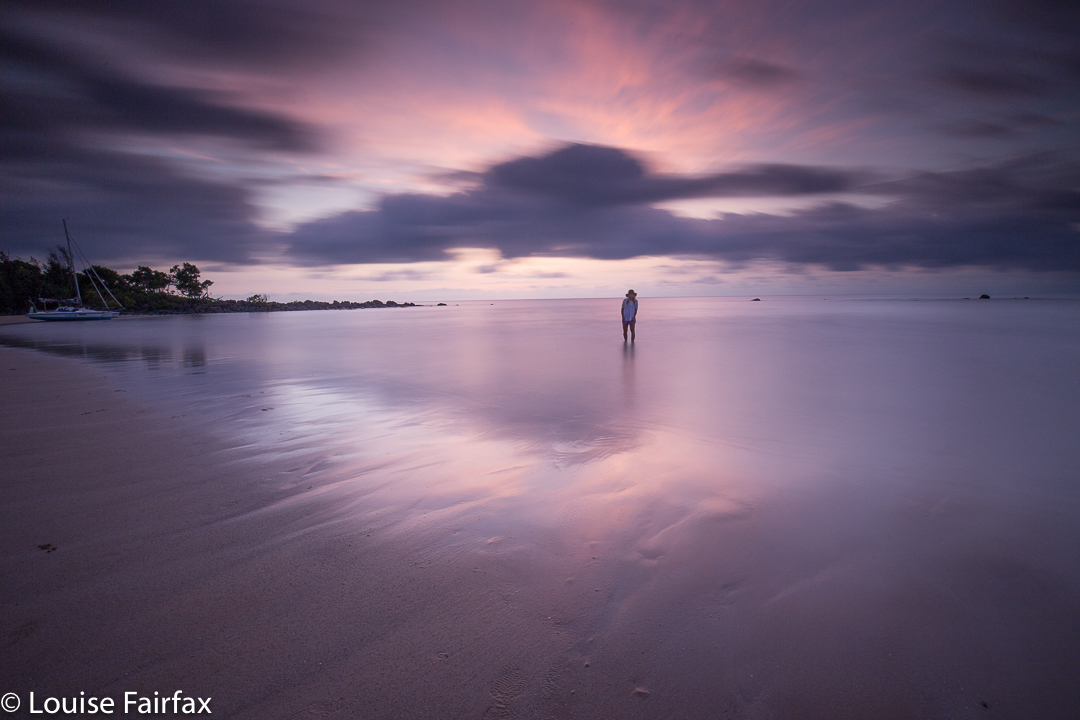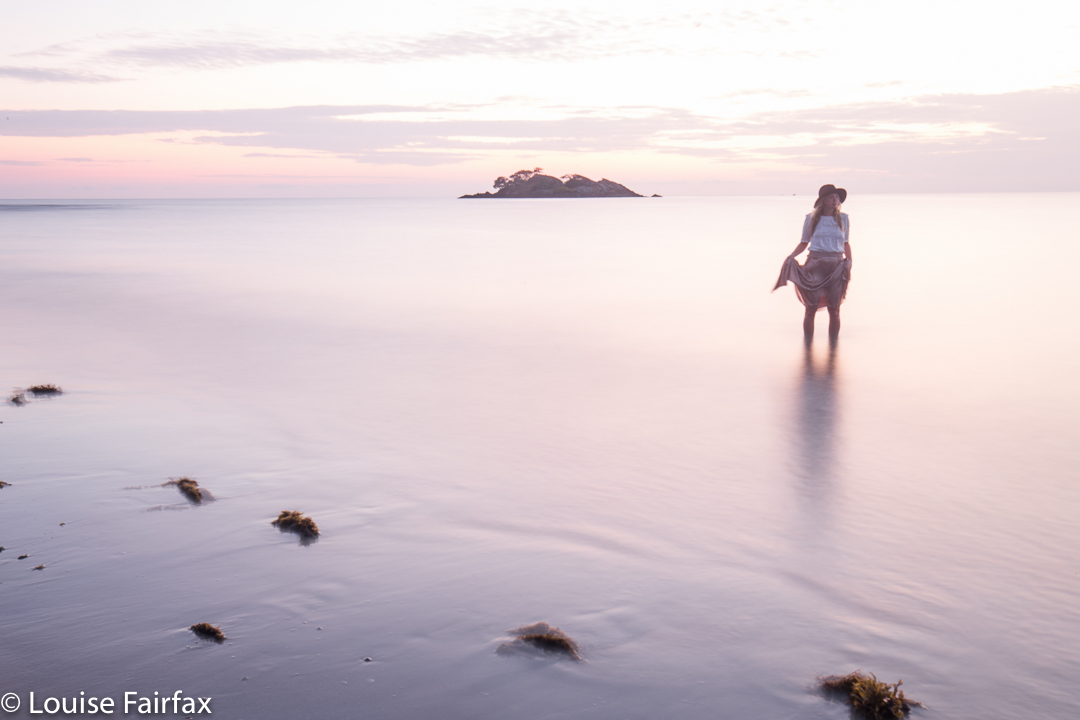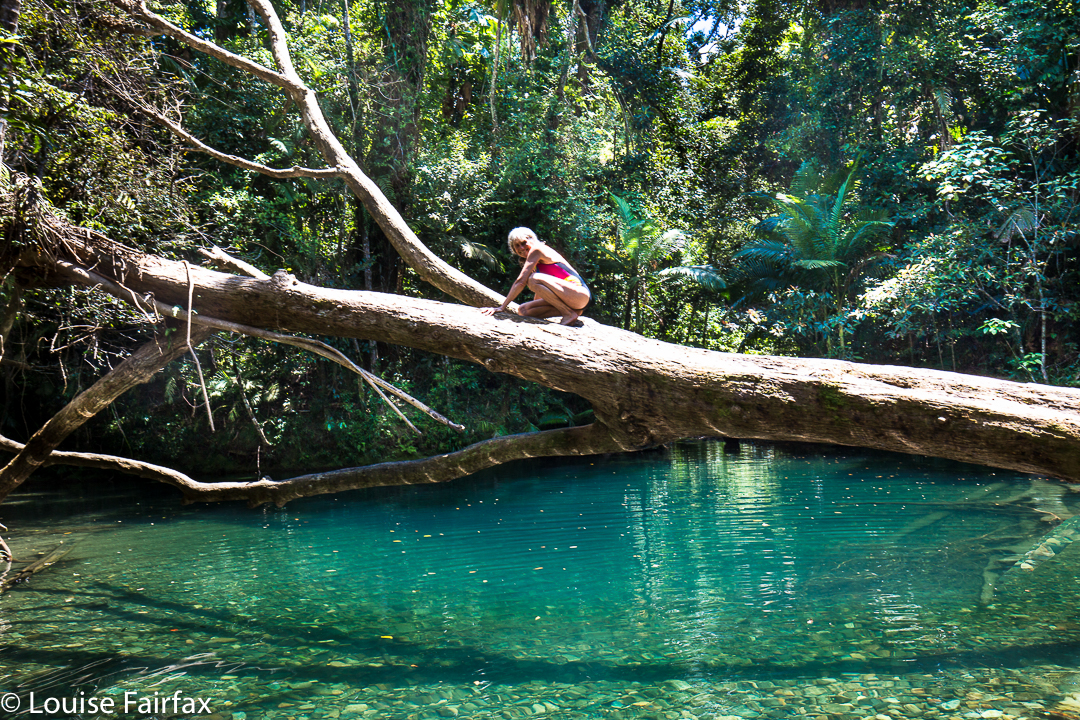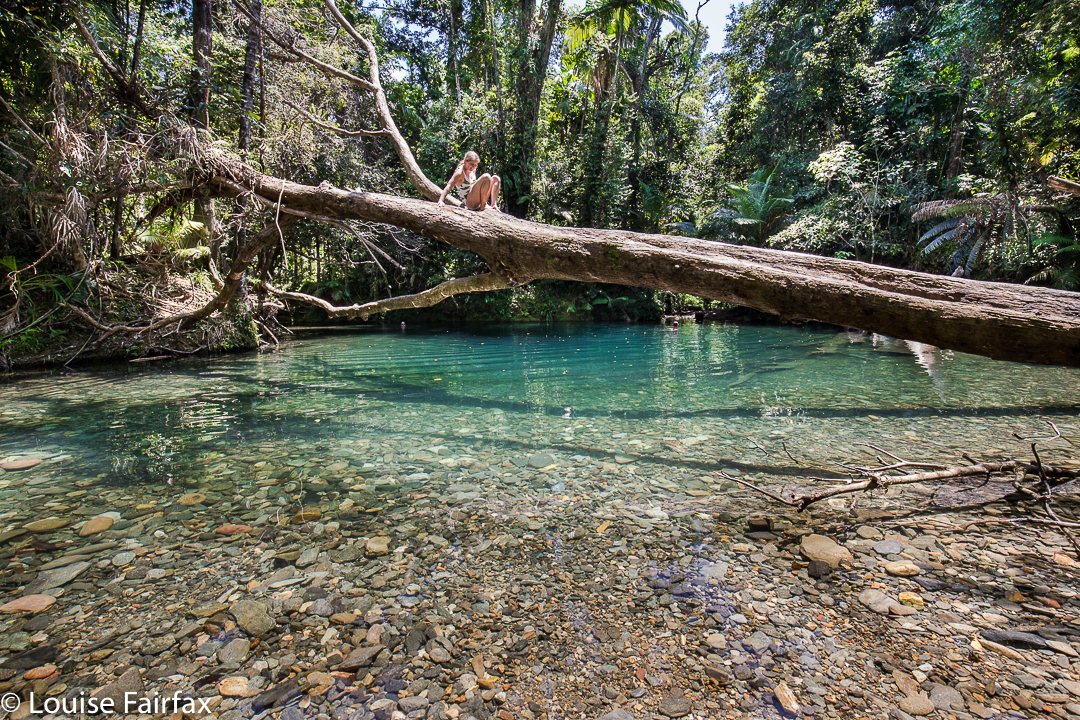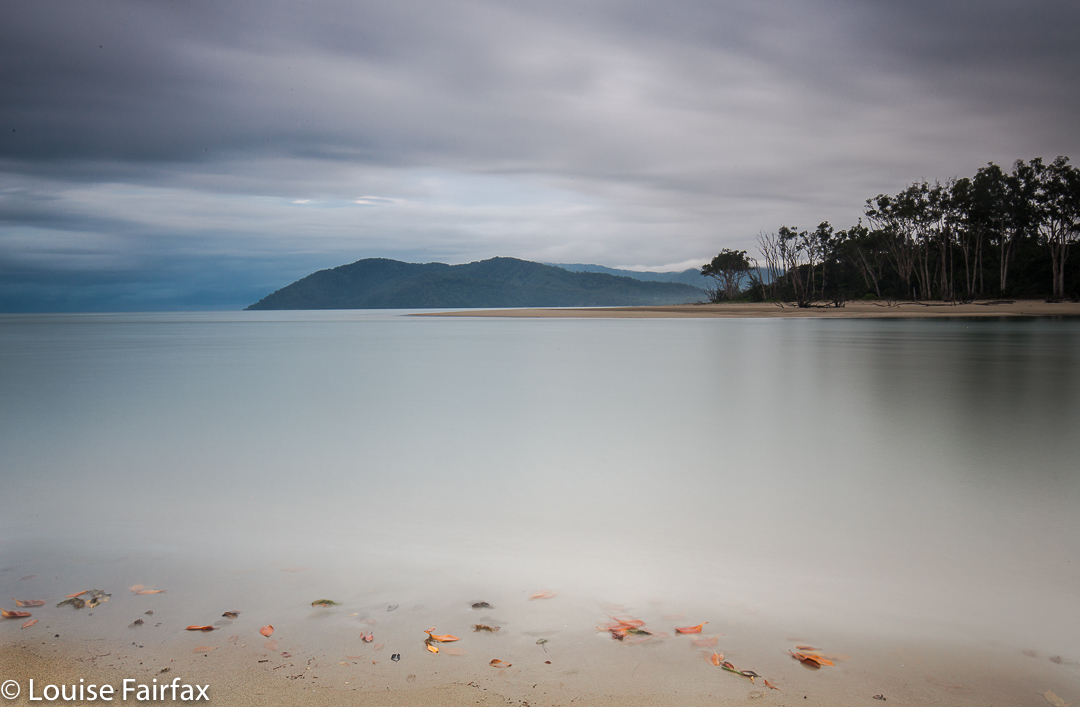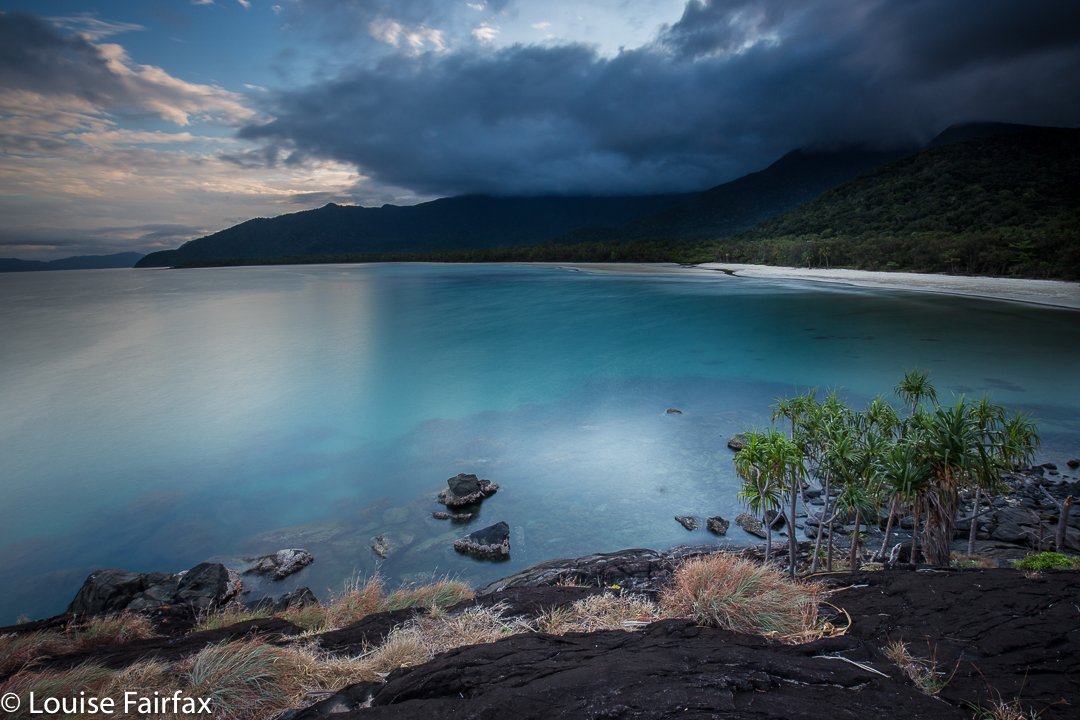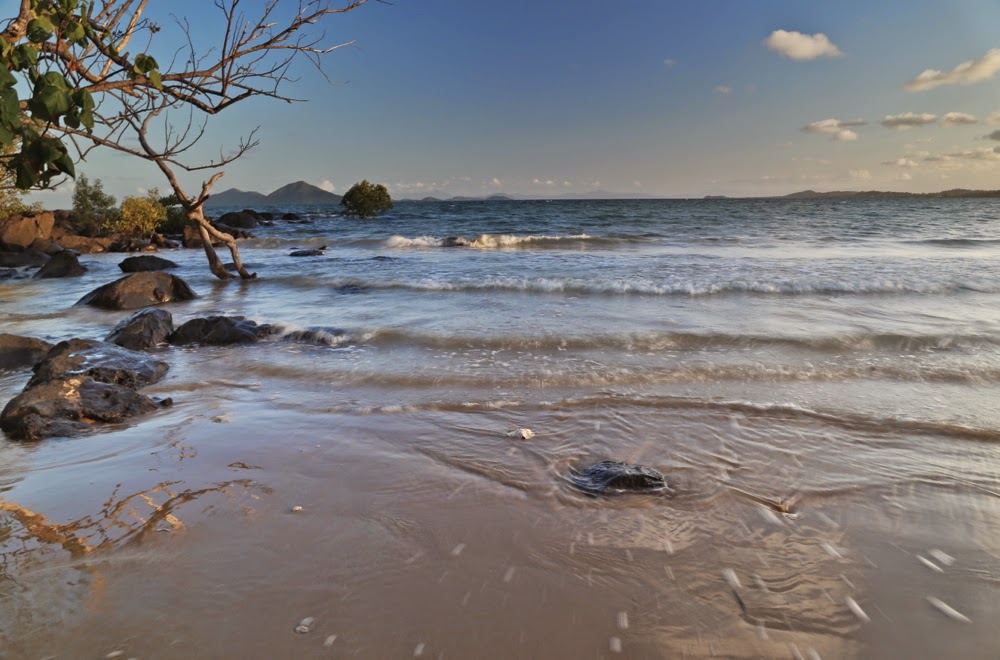Daintree sunset
Queensland’s Daintree Forest is an area that simultaneously fills me with delight and frustrates me beyond belief. It is unique and wonderfully beautiful and yet, whilst it offers the possibility of great enjoyment on the one hand, it steals it away peremptorily with the other.
There it is: there are beautiful tracts of cool, soothing, primaeval forest, but may you walk through it? No. You may drive in your polluting motorised vehicle, but you may not walk on a narrow forest trail, having prolonged contact with the forest, soaking in its atmosphere. You may walk on an assortment of boardwalks that seem to range from about 400 to 1200ms long. These walks are very wide (I guess two wheelchairs might want to pass each other) and very, very smooth so you don’t trip, and very, very safe so your brain goes to sleep due to lack of stimulation and variety in the terrain.
Daintree rainforest
In the first half of last century, the Austrian painter and architect who chose to be called Hundertwasser (1923-1994) knew that natural curves and lumps and bumps are far more stimulating than smoothed out regularity, and designed his houses accordingly. Running on the longest of the boardwalks on offer, doing mindless reps of the circle, and then walking it more times later as there was nowhere else I was allowed to walk, I got bored, not by the magic rainforest (of course), but by the fact that the flatness and smoothness stole the variety I need, as I am an edacious gobbler of complexity. There is a very good reason why in my former life I chose to be a mountain runner and to do orienteering.
Daintree forest – near the boardwalk
The denizens of the area take great pride in being “eco conscious”, so a brochure beside our bed told us. However, the sound of the cafe man over the road motor-blowing his leaves away, killing birdcalls with his ramming drone and forest delights with the smell of the petrol fumes did not strike me as overwhelmingly “eco”. Luckily we’d already photographed the dawn and had a walk along the beach and were eating breakfast at 6.50 when he got underway. I’m glad I’m not a ‘sleep-in on my holiday’ type. The same cafe bombarded us with stadium-strength lights all night, so that we either had to endure the intrusion or close all curtains, occluding rainforest sights and sounds and locking ourselves in a dark cave. I opted for two sleepless, light-filled nights rather than placing myself in an enclosed dungeon. I had plenty of time in the night to ponder the issue of how burning megawatts of electricity to light a closed cafe was in any way eco friendly.
The other disappointing feature of Thornton Beach was that cars could zoom up and down the beach, and did so, doing whirlies in the sand. I felt very glad indeed that I was not playing on the beach with my little toddler grandson when the giant white 4WD utes dashed by. I don’t like tyre marks in my photos of a beach that claims to offer pristine beauty – but you can see from my photos that it is a stunning beach, which is why I have this love-hate relationship with the marred and sullied could-be-perfect-if-managed-more-thoughtfully Daintree.
Daintree forest – the part that draws me to it
The approach-avoidance conflict was to continue at Cape Tribulation (quite apart from the blaring lights issue). Everywhere I wanted to go was prohibited, and “Private. Keep Out” signs were far more numerous than native animals; every path I saw was forbidden. I felt like the narrator of William Blake’s poem, “The Garden of Love“.
I went to the Garden of Love,
And saw what I never had seen:
A Chapel was built in the midst,
Where I used to play on the green.
And the gates of this Chapel were shut,
And “Thou shalt not” writ over the door;
So I turn’d to the Garden of Love,
That so many sweet flowers bore.
And I saw it was filled with graves,
And tomb-stones where flowers should be:
And Priests in black gowns, were walking their rounds,
And binding with briars, my joys & desires.
Blake is objecting to the way that the rules of organised religion effectively kill the joy that should be present in a movement whose two summarising commandments contain the word “love”. But the principle of what he writes applies equally to the situation where you allow bureaucratic rules, set up to allow ease of management, to override the experience of the wonders of nature. It is a very attenuated, sterilised nature you are mostly offered in Queensland. I am left frustrated and wanting more. When you feel obliged to begin each day in a national park smoothing and cleaning each of the small number of paths on offer so that someone doesn’t trip and sue you, then I think you’ve lost the plot.
sunset number two
We’ve walked the Thorsborne Trail four times, climbed Mt Sorrow three, Walshs Pyramid two, Bartle Frere as well – so you can see that we adore what there is on offer. What one is allowed to do is wonderful, but the run-out factor kicks in far too quickly. I don’t mind repeating paths of beauty, but one hungers for something different as well. We tried to do Thornton Peak, but did not bring our full bushwalking gear with us on our Queensland holiday, and neither did we have secateurs, and both would be needed. I will come prepared one year – I was told by locals the only way to the top was by helicopter, but I managed to find one person who told me of an old track, so at least we now know how to get to the start (for details, go into my posting on the “bushwalk australia” website). We drove there, walking past the “Keep out” signs and did the first part, but lawyer vines are ferocious things.
Emmagen Ck waterhole.
Here is what you find at the end of the Emmagen Waterhole track, which is a daring 400 ms long, but you do get to tread over root mounds and stones; no one rakes or blows the path and it is narrow and windy and you can be tickled by the bushes which only just allow you passageway. It was really lovely, but needed to be a good 10 kms longer (or more). It was also very popular, suggesting the need for more such tracks.
Close of the day on Myall Beach, Cape Tribulation.
Mt Sorrow is a fabulous mountain, with an enticing narrow, uneven path that is extremely steep – so steep that you are climbing on all fours to hoist yourself up on occasions, and one quite long section even has a rope so you don’t tumble backwards as you negotiate the almost vertical slope. The forest is thick and green and juicy and beguiling. Strangler figs, buttress roots, thick vines, rubbery leaves and a variety of ferns adorn your journey. You climb a quite narrow ridge, but the forest obscures that fact if you don’t pay attention to what the land underneath is doing: it’s not immediately obvious. To left and right you sense the cerulean ocean beneath you, even though it only gives you tantalising hints until you get to the lookout. This mountain offers me a fantastic workout. I take a bit over an hour in each direction, but that is achieved by going right up to my anaerobic threshold and pushing pretty hard. You don’t do that kind of workout every day, or even every second day. My legs are pretty trashed when I’m finished. I thus only do that mountain once each trip north.
Because there is nowhere else to walk if you want to go for more than 15 minutes, this mountain is surprisingly popular considering how challenging its slope is. In the (bit over) two hours we were on it, we counted fourteen couples and eight solo walkers – all in very cheerful spirits despite the puffing and panting. The official bumph says it’s a five hour journey, and some of them looked as if they’d be there that long. That’s a day’s commitment to that mountain from people who are essentially travelling around sightseeing, and yet they’re all prepared to give it that time as they want to do exactly what they’re doing: experiencing the rainforest right up close in as near to its natural state as you can get without travelling with proper body cover. There are so many mountains in the area. What a pity all but one are inaccessible if you don’t want to fight the jungle to get to the top.
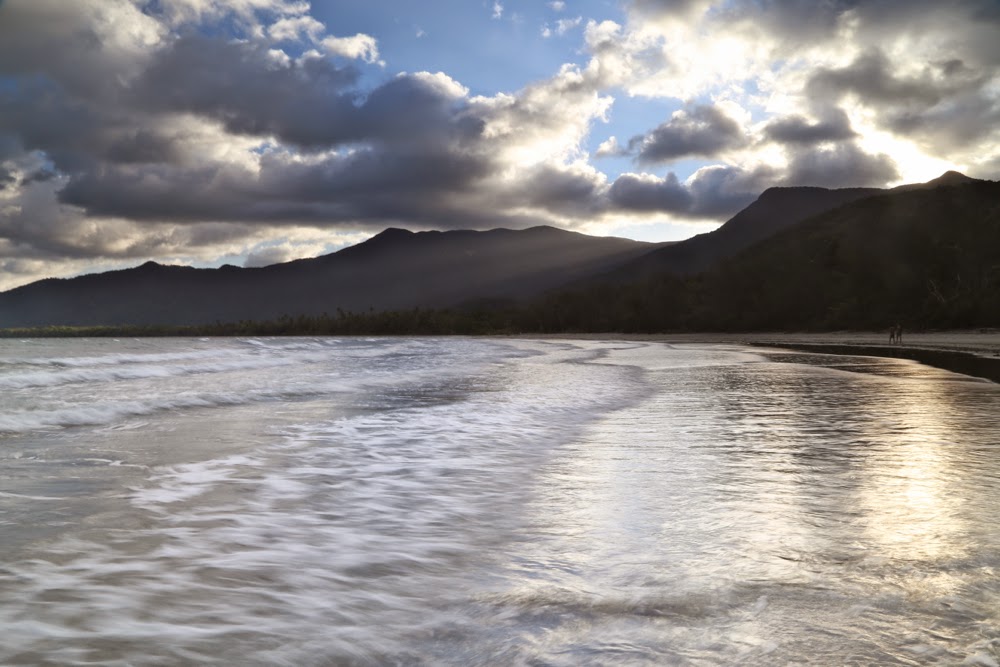
The start of the trail is another area that has you weep for the Daintree if you’re that way inclined. There used to be a walking track from Cape Tribulation to Bloomfield – can you imagine how wonderful that would be??? – but they came in with bulldozers and knocked down a mass of trees so that the 4WDs could hoon up and down the road, stirring up truckloads of off-white dust that cakes all the leaves at the side of the road as a result. The trees look as if they’re statue-trees made out of concrete in a museum of scanty imagination. I have no idea how they manage to get oxygen through their presumably blocked stomata. I had coughing fits when near the roadside.
Time to move on – to pick up the family from Cairns and to move south to Mission Beach where we didn’t have lights invading us all night. Our ecolodge has bungalows with verandahs in the rainforest and a pool with tropical trees and ferns drooping into it, and a path down to the beach for walking or kayaking or swimming, of course. There I can run up my favourite little mountain in Clump Mt NP each day (twice) and can walk along the long beach if I’m not swimming or reading (or playing with Gus or talking or having coffee and cake with my family).
